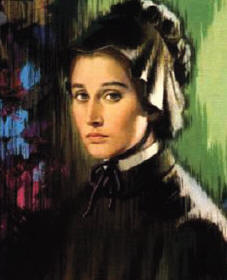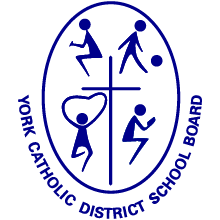 In the United States, the Daughters of Charity trace their origins to Elizabeth Ann Seton, a widowed New York socialite who embraced the Catholic faith and founded a community of women in 1809.
In the United States, the Daughters of Charity trace their origins to Elizabeth Ann Seton, a widowed New York socialite who embraced the Catholic faith and founded a community of women in 1809.
Born in 1774, Elizabeth Ann Bayley was the daughter of a prominent physician. At the age of 19, she married William Seton, whose family owned a successful import business. They had two sons and three daughters.
As was custom for prominent matrons of the time, Mrs. Seton embarked on a career of public charity. She founded a society of women known as the Widow’s Society to raise money and give aid to poverty-stricken widows in New York City. The good works of this group prompted neighbors to refer to them as the “Protestant Sisters of Charity.”
Through most of their married life, William Seton suffered from tuberculosis. In 1803, after suffering severe business losses, including bankruptcy, William’s health deteriorated rapidly. When he expressed a desire to go to Italy to try to improve his health, Elizabeth left four of her children with relatives, and went with William, and their eight-year-old daughter abroad.
After weeks of travel, William died in the Filicchi home in Pisa. The widowed Elizabeth and her daughter sailed home to America in April 1804. Confronted with the need to support her five children without any help from her husband or her husband’s business, which was now bankrupt, Elizabeth opened a school in her home. After that venture failed, she decided to seek employment elsewhere.
After much prayer and counseling from Archbishop John Carroll, Elizabeth accepted an offer from the president of St. Mary’s Seminary in Baltimore to establish a school for girls. She moved to Baltimore in 1808 and opened a small school. This modest beginning marked the start of the Catholic parochial school system in the United States.
Elizabeth Seton took vows of poverty, chastity and obedience on March 25, 1809 and was given the title of “Mother” by Archbishop Carroll. That June, she and her followers donned a simple black religious habit and se4t out for Emmitsburg, Maryland, situated 50 miles west of Baltimore. Their first house was a cottage on the grounds of St. Mary’s College. On July 31, the group began community life as the Sisters of Charity of St. Joseph.
In 1810, the sisters adopted the rules written by St. Vincent de Paul for the Daughters of Charity in France.
Word of the Sisters’ talents and good works spread quickly and soon Mother Seton was besieged by requests for help in setting up parochial schools to serve the burgeoning population along the Eastern seaboard. In 1814, the Sisters of Charity began opening parish free schools, academies and orphanages along the coast.
Mother Seton died at the age of 46 in 1821. The members of her community continued Elizabeth Seton’s work. In 1830, the Sisters were running orphanages and schools as far west as Cincinnati and New Orleans and had established the first hospital west of the Mississippi in St. Louis.
Much later, in a response to a request from President Abraham Lincoln, more than 200 Daughters of Charity served on battlefields and in military hospitals during the Civil War. They served again in the Spanish American War at the end of the 19th century, when American Daughters in Puerto Rico shared supplies with Spanish Daughters nursing soldiers of the opposing army.
Elizabeth Ann Seton, founder of the American Daughters of Charity, was beatified on March 17, 1963 and canonized on September 14, 1975.
